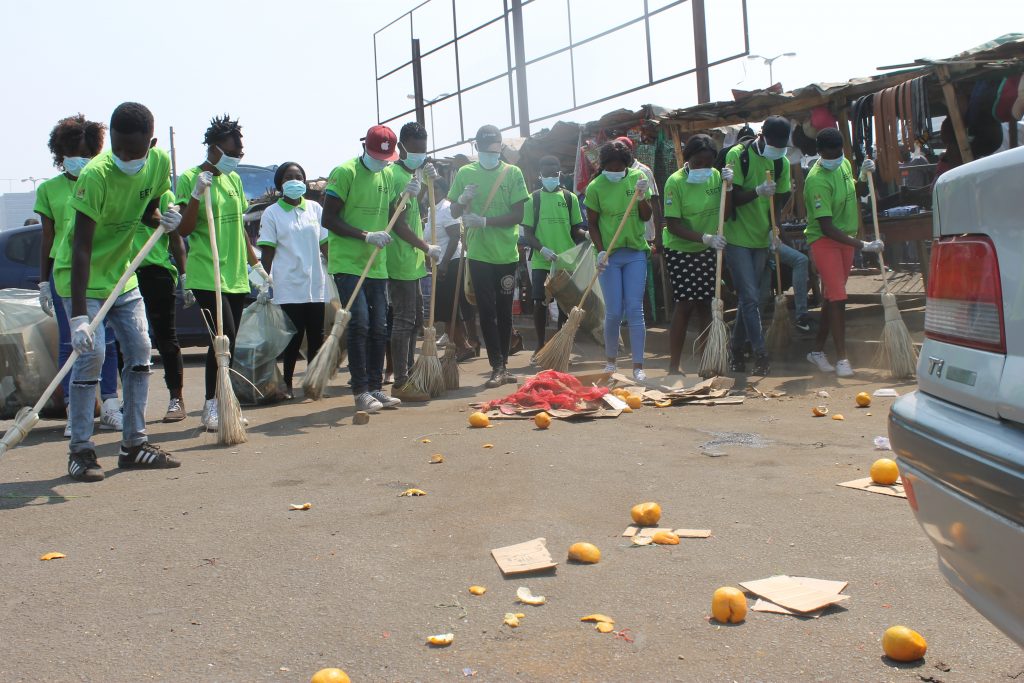DEPARTMENT OF ENVIRONMENT AND NATURAL RESOURCES
The Department of Environment and Natural Resources is an administrative arm of the ministry which is mandated with the promotion and coordination of policies and practices in environment and natural resources management. The department has a staff compliment of 14 officers and is made up of two sections, i.e. Environment section and Natural Resources section.
MISSION
Promote Best Practices in Environment and Natural Resources Management
VISION
To attain a clean and healthy environment with well managed natural resources for sustainable socio economic development
ENVIRONMENT SECTION
The section deals with various complex policy issues relating to the implementation of Environmental policies and acts such as EMA Act, Environment Policies and Strategies, etc. Its activities involve but are not limited to the following;
- Coordination of waste management, pollution and sanitation policy related issues
- Environmental Impact assessments (EIAs) and the various challenges involved with its implementation
- Coordination of Multilateral Environmental Agreements pertaining to pollution, hazardous substances, wetlands environmental assessments etc
- wetlands and land use planning
- Various projects that are being implemented by the Ministry around brown issues such Ozone depleting substances management, Organic pollutants management.
NATURAL RESOURCES SECTION
The section deals with varied issues surrounding wildlife management and forestry generally referred to as natural resources management. The following are some major issues the section deals with;
- Coordination of policies, laws and activities relating to the protection of wildlife and forestry
- CAMPFIRE issues and community based natural resources management
- The creation of various Trans-Frontier conservation areas (TFCAs). Zimbabwe is a member of at least five of those regional groupings
- Multilateral Environmental Agreements pertaining to wildlife and forestry such as CITES
- Resource mobilisation for natural resources management
OVERRALL FUNCTIONS OF THE DEPARTMENT
- Plan, formulate review and co-ordinate policy in support of sustainable development
- Develop action plans for the implementation of the National Environmental Policy and Strategies;
- Promote conservation and sustainable use of natural resources through coordination with other Government Ministries, non-state actors and communities;
- Coordinate the domestication and implementation of Bilateral and Multi-Lateral Environmental Agreements (MEAs);
- Provide policy guidance to, and monitor implementation of programmes by Ministry’s Parastatals.
- Integrate socio‑economic valuation of environmental costs and benefits in development and decision making;
- Conduct environment and natural resources research and analysis in support of sustainable development;
- Promote education, training and awareness on environment and natural resources conservation;
- Co-ordinate the review of environmental and natural resources legislation;
- Coordinate trans-boundary management of environment and natural resources e.g. TFCAs;
- Develop processes and procedures for conducting environment and natural resources assessments and review for development proposals;
- Define the institutional and administrative arrangements for coordinating environmental assessments;
- Coordinate the production of the State of the Environment Report;
- Provide environment and natural resources information and ensure stakeholder participation in environmental programmes;
LEGISLATION RELEVANT TO OUR WORK
- Constitution of Zimbabwe Section 73
- Environmental Management Act (Chapter 20:27)
- Parks and Wildlife Act (Chapter 20:14)
- Forest Act (Chapter 19:05)
- Rhodes Estate Act (Chapter 20:17)
- Prevention of Cruelty against Animals Act (Chapter 19:09)
- Communal Land Forest Produce Act (Chapter 19:04)
- Trapping of Animals Act (Chapter 20:21)
PARASTATALS UNDER THE DEPARTMENT
The department works is intertwined and works with the following parastatals;
- Parks and wildlife management authority
- Environmental management agency
- Forestry Commission
- Allied Timbers Zimbabwe
The parastatals are responsible for the day to day operational activities to implement the various environmental and natural resources acts and policies.
PROJECTS UNDER THE DEPARTMENT
European Union Funded Projects
- The 11th European Development Fund (EDF) programming exercise was launched in August 2012 after the signing of a Financing Agreement contract between the EU Delegation and The National Authorizing Officer for the 11th EDF, which is structured within the Ministry of Finance and Economic Development.
- The EU is providing a grant of €13.3 million to the Natural Resources Management component for the period 2014-2020.
- Under this facility the EU is providing support to the following programmes which are being spearheaded by our Ministry;
- CAMPFIRE framework review process
- Performance reviews of Parastatals I.e. Parks and Wildlife Management Authority (ZimParks), Environmental Management Agency (EMA), and Forestry Commission (FC).
- Natural Resources Management
Hwange Sanyati Biological Corridor Project
- Zimbabwe was allocated US $ 5.64 million in the GEF 5 Cycle (2010 – 2014).
- The funds under GEF 5 Cycle are funding a project titled Hwange Sanyati Biological Corridor Project which runs from 2015 – 2019.
- Hwange Sanyati Biological Corridor Project focuses on three key components namely; protected area management and community livelihoods, improved forest and land management and corridor sustainability.
- The project has assisted communities to deal with human wildlife conflicts and other environmental issues whilst improving livelihoods.
Strengthening Biodiversity and Ecosystems Management and Climate-Smart Landscapes in the Mid to Lower Zambezi Region of Zimbabwe Project
- The project is being implemented in Hurungwe, Muzarabani and Mbire Districts.
- The project has four components which are to strengthen the capacities of law enforcement agencies to fight wildlife and forest crime, strengthen protected area and Community Wildlife Conservancy, management for wildlife and woodlands, build strong sustainable natural resources management capacity for local communities and districts in co-operation with private sector and promote effective knowledge management.
- The project area is a biodiversity hotspot of international significance. The project runs from 2018 -2024.
- The project is being implemented through the United Nations Development Program (UNDP)
- The project will be implemented through 6th cycle funds from the Global Environment Facility (GEF)
Sustainable Forest Management Impact Programme
- Also known as the GEF7 project, the project is expected to provide significant support to the country to avoid further degradation, desertification and deforestation of land and ecosystems through the sustainable management production of landscape, addressing the complex nexus of local livelihoods, land degradation, climate change, biodiversity conservation and sustainable use as well as environmental security.
- The three core interventions are as follows: (i) strengthening the enabling environment for the sustainable management of the Save and Runde Catchments, (ii)Scaling out SLM and SFM good practices at Save and Runde Catchment, and (iii)Effective knowledge management, reflecting learning, monitoring and evaluation.
- The targeted landscape is located in the: Manicaland (Buhera, Chimanimani, Chipinge), Masvingo (Bikita, Chivi, Masvingo, Zaka) and Midlands (Shurugwi)
- The project will be implemented through the Food and Agriculture Organisation (FAO)
- The project will be implemented through 7th cycle funds from the Global Environment Facility (GEF)
Integrated Health and Environment Observatories and Legal and Institutional Strengthening for the Sound Management of chemicals in Africa (ChemObs)
- The Ministry of Environment, Tourism and Hospitality in collaboration with the Ministry of Health and child Care is implementing the ChemObs project.
- The overall objective of the project is to contribute to improved health and environment protection through strengthening national and regional institutions, developing country owned plans of actions and implementing priority chemicals and related interventions.
- The project is being funded by the GEF through UNEP under regional projects funds
Regional Project on Disposal of Polychlorinated Biphenyls (PCB) Oils contained in transformers and disposal of capacitors containing PCBs in Southern Africa.
- The overall objective of this project is to reduce environmental and human health risks from PCB releases through the demonstrations of a Regional approach to the introduction of cost-effective and socially acceptable Environmental Sound Management (ESM)of PCB oils, equipment and wastes held by electrical utilities and other PCB owners in participating countries.
- The Project was established under two Conventions i.e. Stockholm Convention and Basel Convention
- The project is being funded by the GEF through UNEP under regional projects funds and is being implemented through Zimbabwe’s Electricity utility company, ZESA.
Sustainable Wildlife Management Program (SWMP)
- The SWMP is being implemented in the Kavango – Zambezi Transfrontier Conservation Area (KAZA TFCA) in Zimbabwe and Zambia and in two community areas namely Mucheni community under Binga RDC and Simalaha Community in Zambia.
- The project focuses on developing community conservancies in order to improve community livelihoods and wildlife management
- The project is being financed by the European Union under the 11th European Development Fund natural resources management portfolio to the tune of US$5,5 million
- The project is being implemented through FAO and other development partners such as CIRAD



